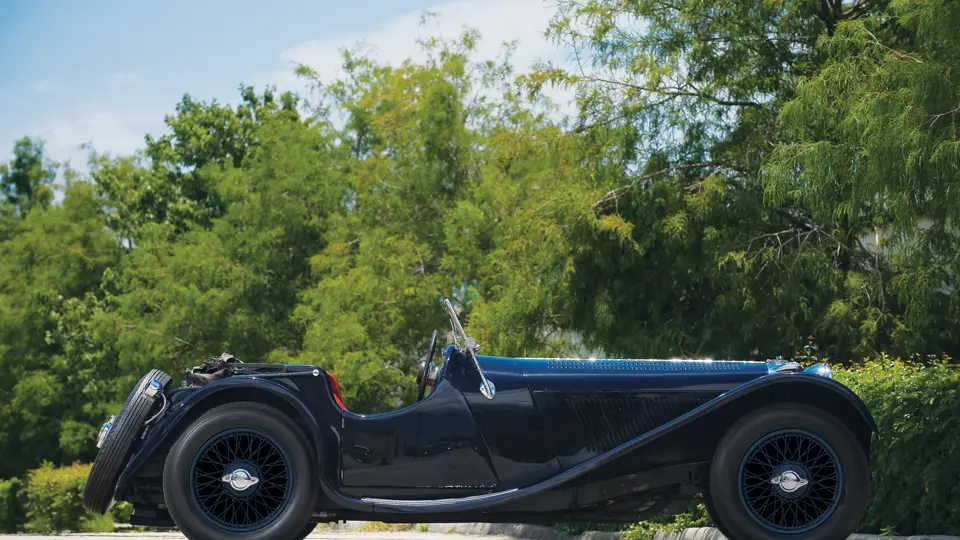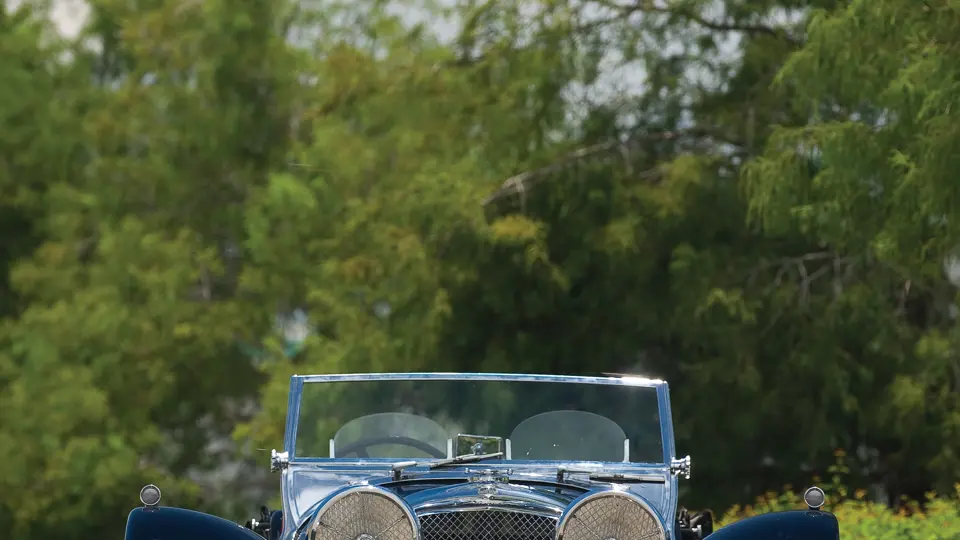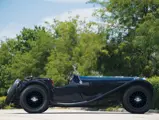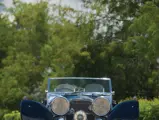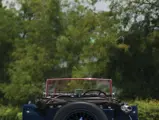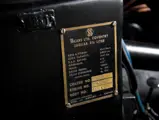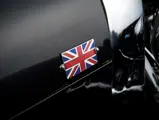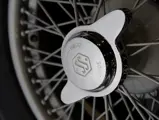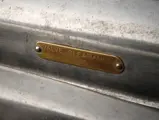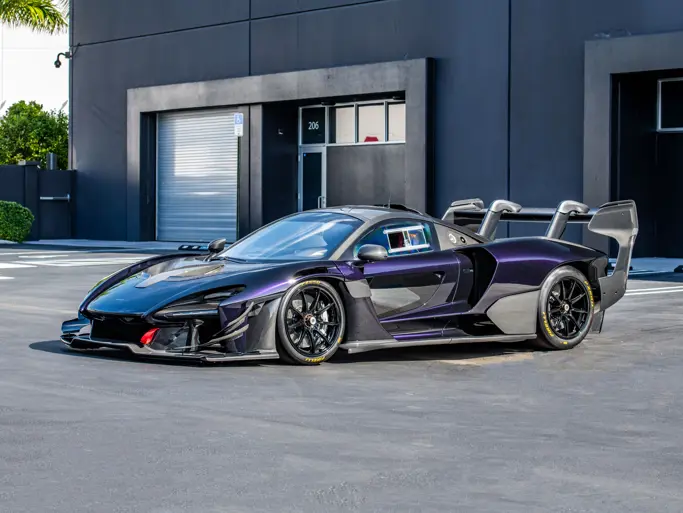125 bhp, 3,486 cc overhead valve inline six-cylinder engine, twin SU carburettors, four-speed manual gearbox, independent front suspension with semi-elliptic leaf springs and friction shock absorbers, live axle rear suspension with semi-elliptic leaf springs and friction shock absorbers, four-wheel mechanical drum brakes. Wheelbase: 2,642 mm
• One of the great pre-war British sports cars
• One of only 118 3.5-Litre examples built
• A well-sorted, nicely presented example ideal for tours and rallies
• Ex-Keno Family
The Jaguar SS 100 was one of the first cars to bear the Jaguar name, although at the time it was just a nameplate. It wouldn’t become the corporation’s brand name until after World War II. But more important, it was the car that elevated the parent company from relative obscurity—just one of many small-volume British carmakers struggling in near anonymity—to a purveyor of some of the most stirring sports cars of the pre-WWII era.
Born in 1901, young William Lyons became a keen motorcyclist in his teens. This led to a friendship with a neighbour, William Walmsley, who was building motorcycle sidecars in a garage on his property. Lyons admired Walmsley’s craftsmanship and bought one of the sidecars for his own machine. Soon he was assisting in Walmsley’s modest enterprise. It wasn’t long before the arrangement was formalised as the Swallow Sidecar Co. In 1926 Swallow Sidecars became the Swallow Sidecar and Coach Building Co., demonstrating its expanded services with a custom-bodied Austin Seven sporting aluminium sheet metal fabricated by the Swallow works.
In 1931 the word sidecar disappeared from the company’s name, and the Swallow Coachbuilding Co., Ltd. opened the doors of expansive (compared to the cramped Blackpool shops) new facilities in Coventry. The location was chosen, at least in part, for its proximity to the Standard Motor Co., Ltd., which supplied engines, underpinnings and other hard parts for the Swallow operation. Then the Swallow name was also scrapped, replaced by S.S. Cars, Ltd., a publicly held company with a new corporate identity that reflected a new direction, underscored by the introduction of the SS1.
The emphasis was on sporty elegance, and the SS1 sedan, with its long hood, high beltline and low roofline, suggested high performance in evening clothes. The drophead-touring version that followed, for its part, provided a preview of the SS 100. The SS 90 came first, making its debut in 1935. It had the look, with its long, louvered hood and low slung coachwork. But the performance delivered by its 2.7-litre Standard side-valve six-cylinder engine, tested in the 1935 RAC Rally, didn’t measure up to the expectations of either Lyons or W.M. Heynes, who Lyons had poached from Humber in 1934 to be his chief engineer. Accordingly, the SS 90 served as a transition step between the SS 1 roadster and the SS 100; only 21 found their way to private owners.
The SS 90’s underslung chassis made the transition more or less intact, with a 104-inch wheelbase, but there was a major change under the hood. Retaining the Standard six-cylinder block and displacement, Lyons and Heynes engaged the services of Harry Weslake, England’s reigning cylinder head guru, to redesign the engine’s top end. The result was a new overhead valve design with aluminium pistons, augmented by a robust bottom end to handle substantially improved torque and horsepower. The crankshaft was supported by seven main bearings. Fed by a pair of SU carburettors, the revised engine exceeded design goals, generating 102 horsepower at 4,500 rpm, compared to 68 horsepower by its flathead predecessor.
As was true of Jaguar’s great post-WWII sports cars, the XK 120, 140 and 150, the numerical portion of the alphanumeric name was supposed to indicate the car’s top speed potential. Thus, the SS 100 should have been capable of 100 mph or more. But it wasn’t; 95 mph was tops, and its 0-to-60 mph times were merely adequate at about 12 to 14 seconds.
Accordingly, Lyons, Heynes and Weslake went back to work on the engine. The cylinder bore was increased from 73 mm to 82 mm, and stroke was stretched from 106 mm to 110 mm, expanding displacement from 2,664 cc to 3,486 cc. Valve diameters expanded, connecting rods were a high-strength steel alloy, and the crankshaft turned in sturdier main bearings. The compression ratio was reduced from 7.6:1 to 7.2:1, and the engine’s peak output rpm diminished slightly, thanks to the longer stroke from 4,600 rpm to 4,250.
But the gain in output was dramatic: 125 horsepower versus the 102 of the earlier engine. Of course, more power meant more speed. Allied with a new transmission, driveshaft and differential, the 3.5-litre six was capable of propelling the 2,660 pound SS 100 to 60 mph in just over 10 seconds. A contemporary road test by Autocar magazine reported 10.4 seconds, very brisk for the day, and the car was finally capable of topping 100 mph.
Unveiled at the 1937 London Auto Show, the 3.5-litre SS 100 quickly demonstrated its upgraded performance in a variety of competitive venues, including Brooklands, the Alpine Trials and the Welsh, RAC and Monte Carlo rallies. In all, 190 2.5 SS 100s left the Coventry works; 3.5-litre production reached 118 cars before the Coventry works was changed over to military work, making aircraft components. There was also a handsome SS 100 Coupé, created for the 1938 London Motor Show at Earls Court. It was one of the show’s stars but never went beyond prototype status.
The SS 100 offered here, chassis 39032, was delivered through the Parker’s Bolton agency in Manchester, England in 1938. It spent the first 24 years in the United Kingdom before it was acquired by Eugene Faust, who brought it to New York in 1962. Faust kept the car for seven years, a stewardship that included a restoration. The original engine (M 545 E) had been replaced much earlier with number M 499 E, and Faust also replaced the original fenders.
In 1969, Faust sold the SS 100 to Ron Keno, a successful antiques dealer and art teacher residing in Mohawk, New York, whose sons Leslie and Leigh have followed in this family tradition and are renowned for their antiques expertise both on and off the small screen. Though its seasons have been short, as the Kenos only drove the car during the summer and autumn, the SS 100 has travelled extensively, including its most ambitious tour, the 1998 1,000-mile Louis Vuitton China Run.
Gunmetal grey through much of its life, the SS 100 has been recently repainted a dark blue, and the interior appointments are fresh from the shop, highlighted by new red leather upholstery. The engine has been carefully maintained over the years and was freshened for the China foray. More recently, additional work has been done to maintain this beautiful Jaguar. This includes extensive electrical work, rebuilding of the gauges and speedometer, fuel tank repair, replacement of the clutch assembly and further gearbox work. Finally, the wire wheels were stripped and repainted blue to match the body colour.
The owner of this 3.5-litre SS 100 will join a very select group of owners here and overseas who are fortunate enough to possess one of these stunning automobiles. It would certainly be a welcome addition to vintage sports car club rallies, exhibits and races around the world and also has the potential to become a concours-winning pre-war Jaguar.
A reduced import tax of 5% may be applicable to this car. For further explanation please speak with an RM representative.

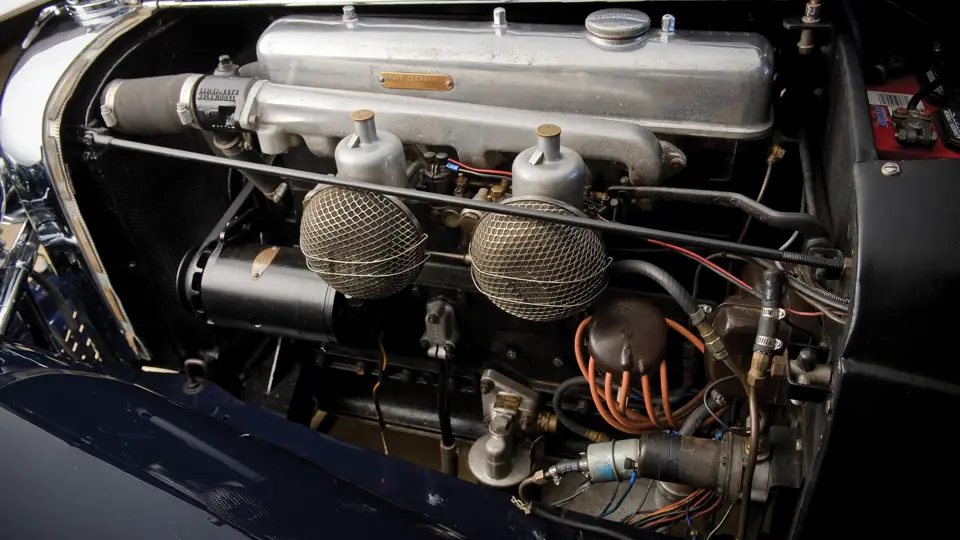
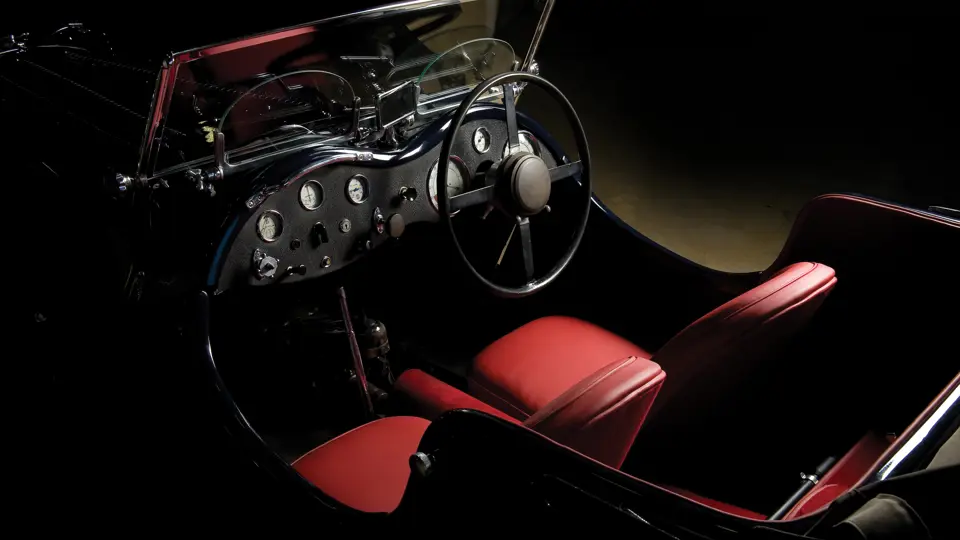

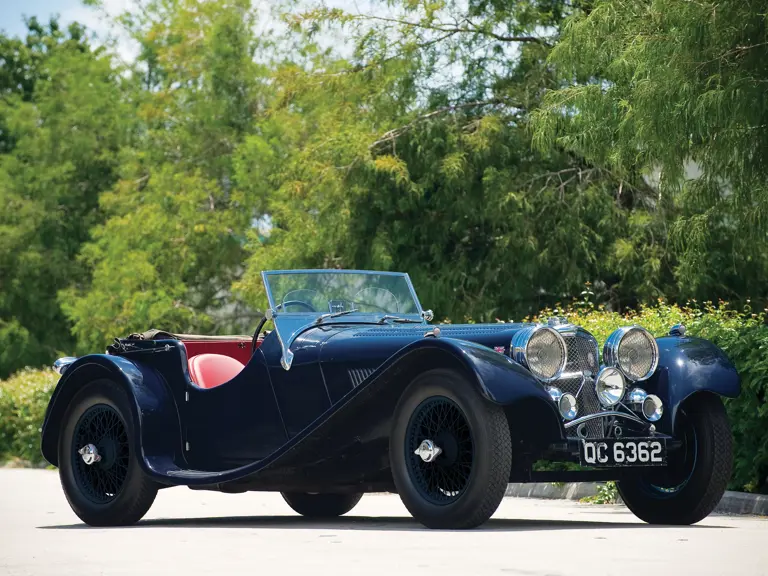
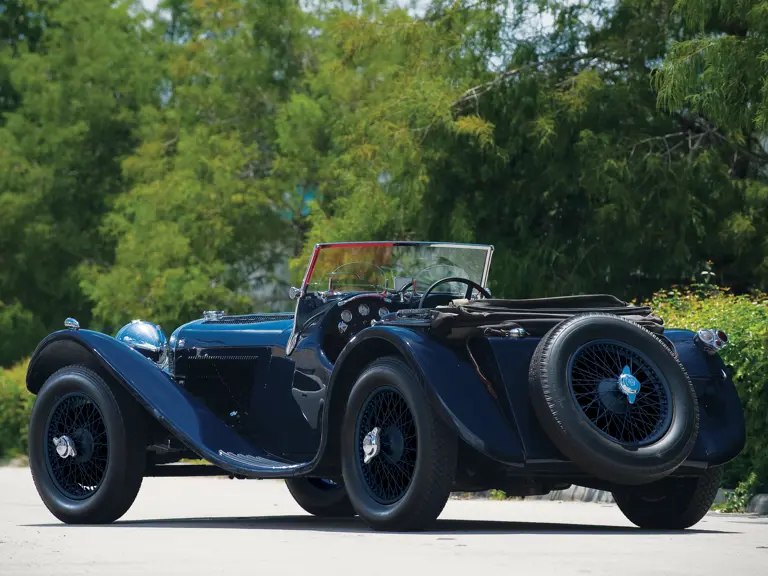

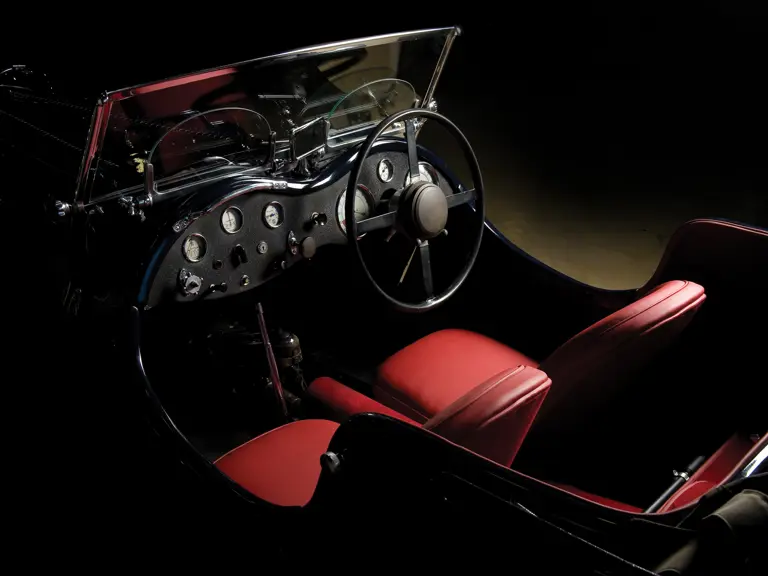
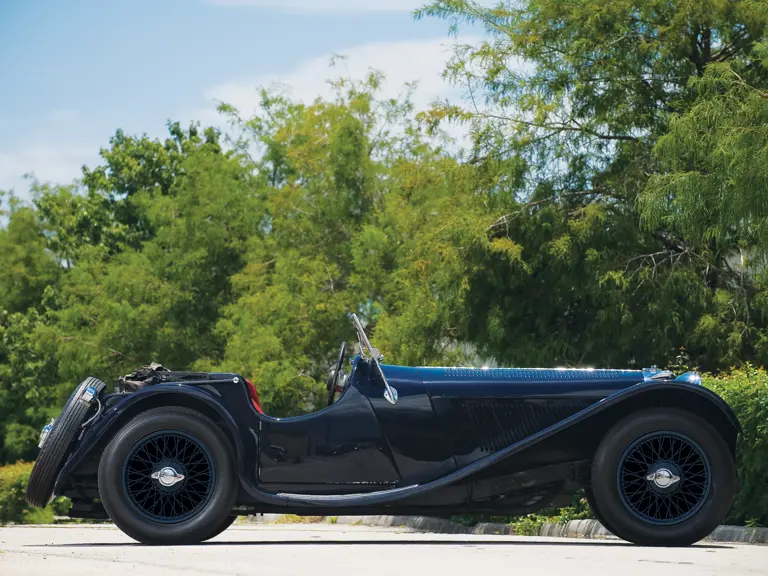


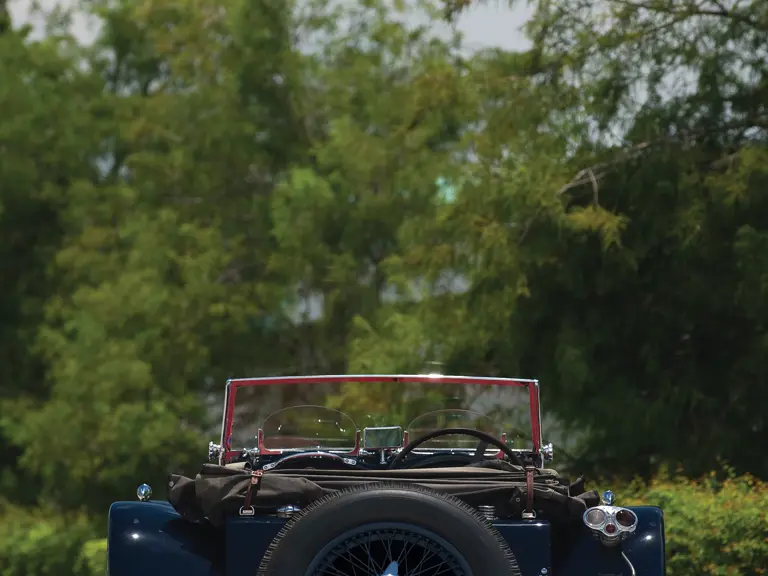
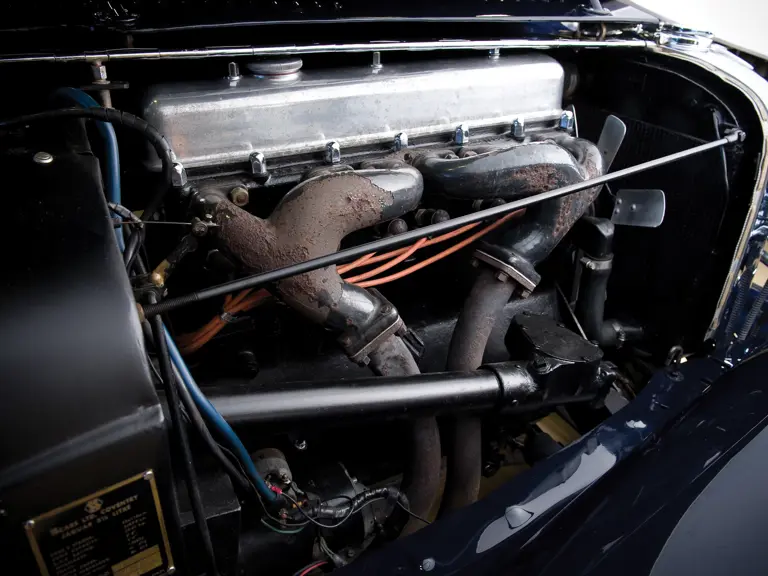
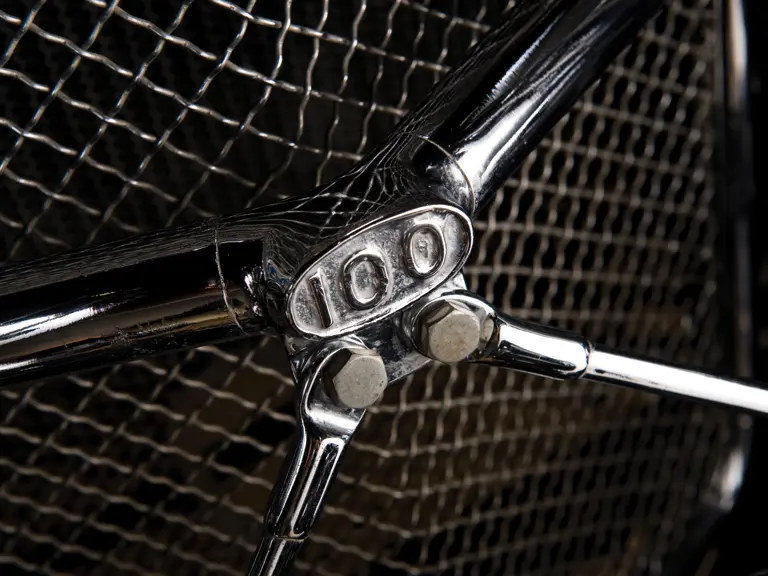
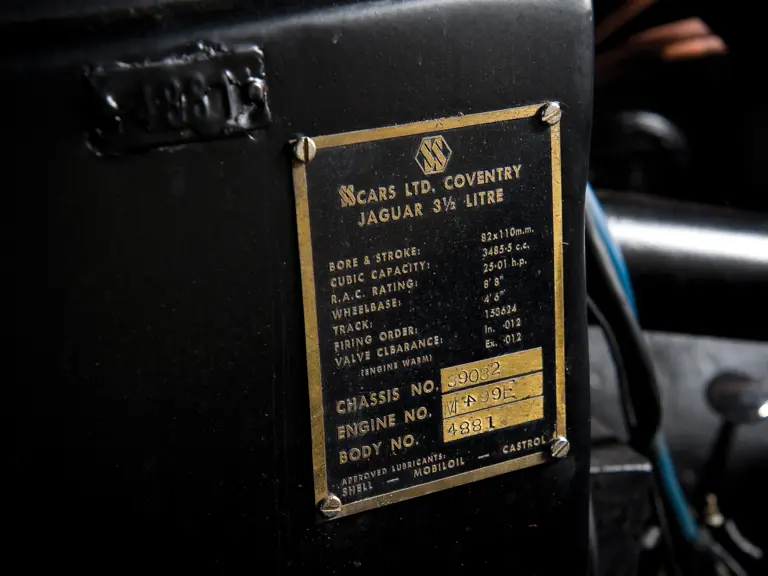
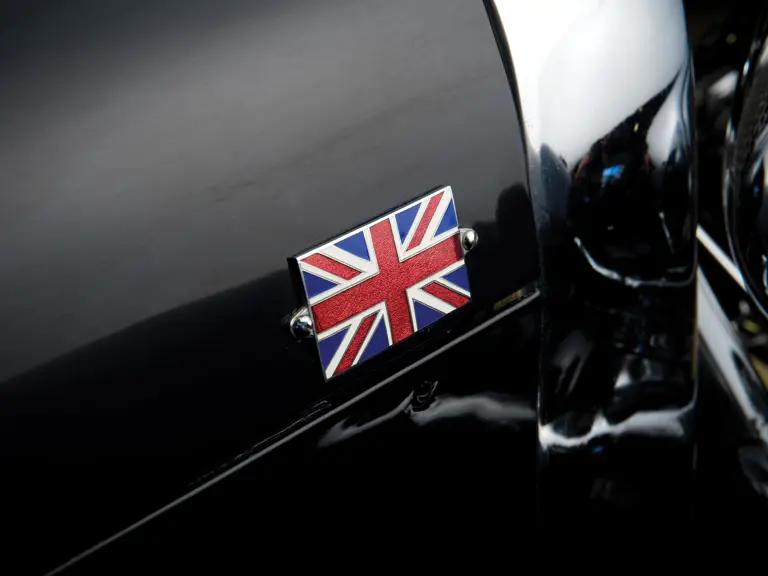
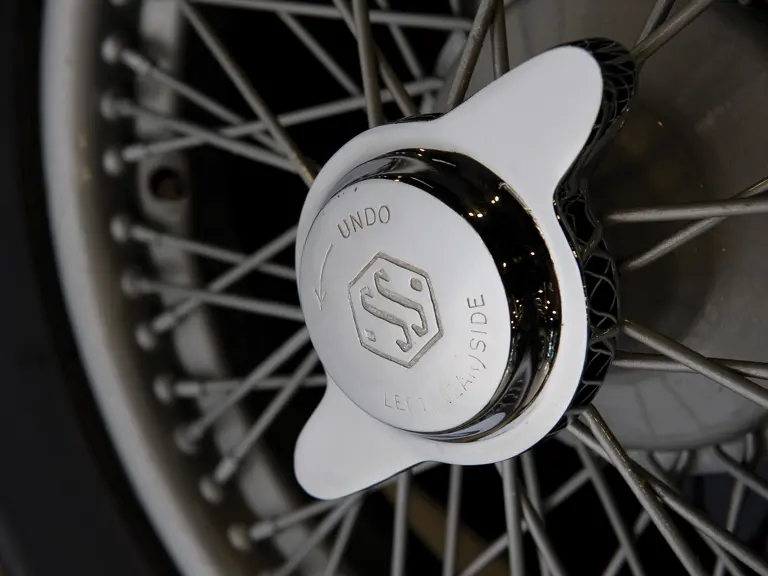
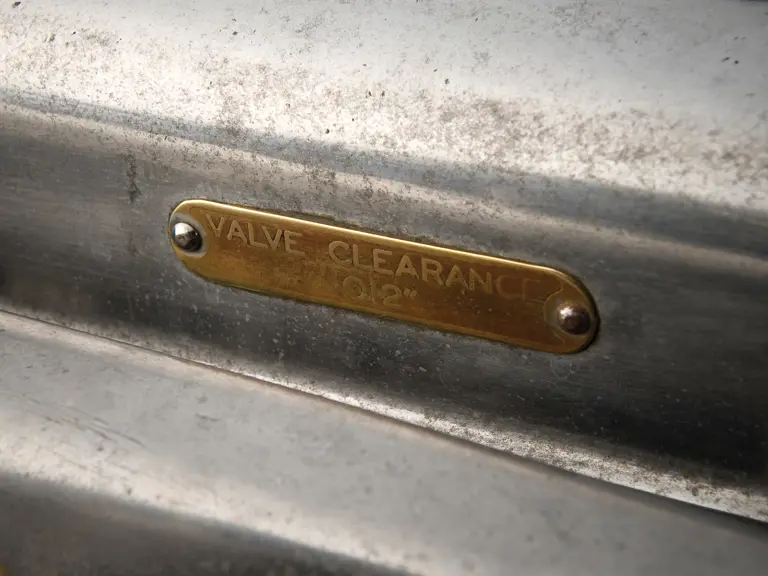

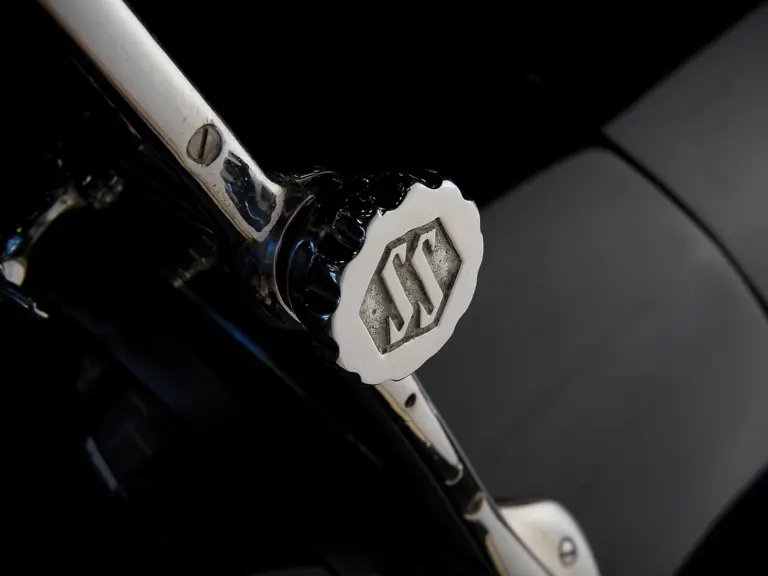
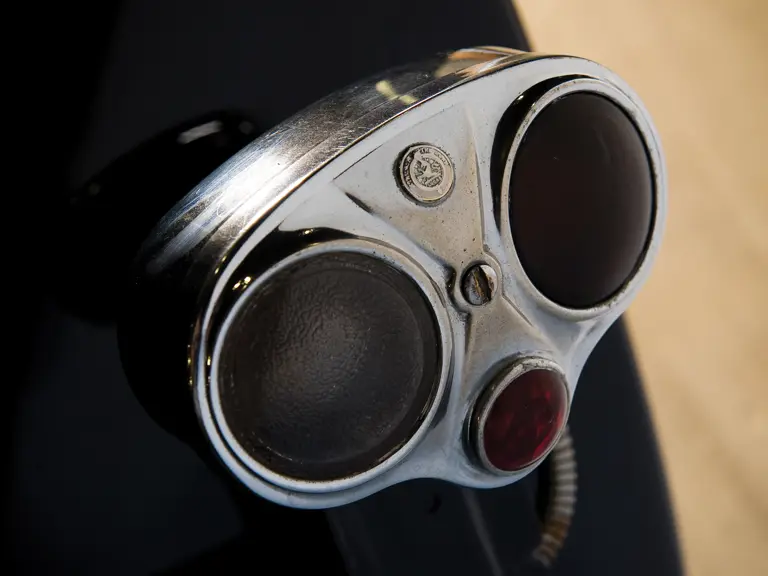
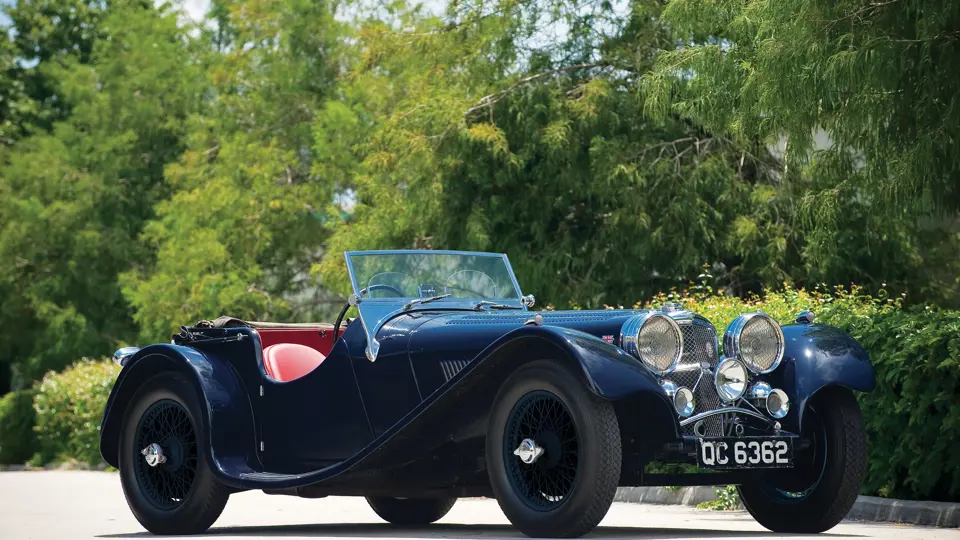
 | London, United Kingdom
| London, United Kingdom
